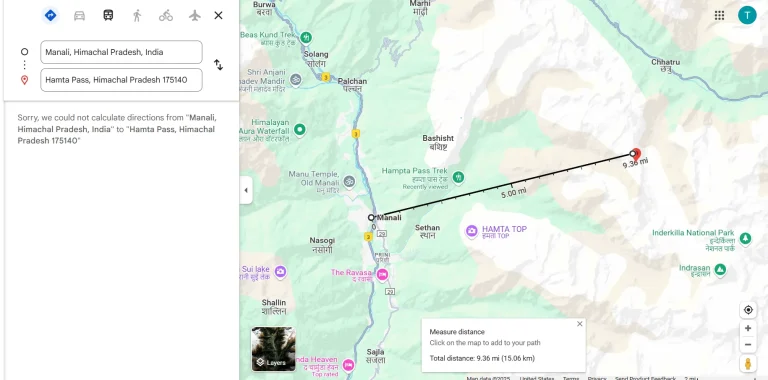5 Places to See in the Bay of Kotor, Montenegro
The Bay of Kotor is beautiful year-round, but the peak tourist season happens from May to September. For fewer crowds and warmer weather, consider visiting during the shoulder seasons of April and September.
Hemmed in by commanding cliffs, the cobalt bay defies geographic description—is it a fjord or a submerged canyon? Whatever you call it, the views are mind-blowing.
Kotor
Kotor is a fortified town on Montenegro’s Adriatic coast, set in a bay near limestone cliffs. Its medieval old town is a maze of winding streets and squares, lined with Romanesque churches including Kotor Cathedral. It also houses the Maritime Museum, which explores the city’s long seafaring history.
From the top of the walls that encircle the old town, you can admire the sweeping views over the deep blue bay and surrounding mountains. The walls began construction in the 9th century and by the 14th were almost complete. You can walk along the walls during daylight—but the best time to visit is after dark, when they’re illuminated and glow a bright white. You can access the walls from Gurdic Bastion, South Gate, Valier Bastion, and Kampana Tower on Scurda.
On the way back to the town center, stop at Saint Tryphon Cathedral, a striking Roman Catholic church with uneven towers that’s considered one of the finest in all of Montenegro. The interior has impressive slender columns and remains of frescoes.
If you’d like to explore a little further inland, take the road that heads up from the Bay of Kotor into the mountain ridges—but be warned: The twisting, curving highway has 25 numbered and unnumbered 180-degree turns and nothing but rock wall on either side. If you’re prone to motion sickness or have anyone in your party with such issues, it’s best not to attempt this drive.
Perast
One of the most beautiful towns in Bay of Kotor, Perast is a tranquil spot that offers visitors a chance to enjoy a slow, romantic meal by the water. There are a number of waterfront restaurants here, from more expensive fine dining options attached to hotels to simple taverns. Be sure to make time for a visit to the Church of Saint Apostle Mark, which is a wonderful example of the many small Catholic and Orthodox churches that dot the town. The church was once part of a larger palace owned by Martinovic family and is a reminder of the former wealth of this area.
Perast is famous for its stunning vistas, but it’s also home to a handful of fascinating ruins and churches. Tour the dozen or so renaissance and baroque palaces that dot the historic center, as well as the church of Our Lady of the Rocks (Gospa od Skrpjela). The church is on a small island off the coast of Perast, and it’s accessible by boarding a boat from the town dock. The round-trip cost is 5 euros per person, and young children are free.
Be aware that the church and island can be very crowded, especially on cruise ship days or during high season. However, it’s still worth a trip to see this beautiful town, and there’s plenty of room to wander around without being overwhelmed by crowds.
Risan
Risan is one of the oldest settlements in the Bay of Kotor and has roots that stretch back millennia. It has witnessed the rise and fall of Illyrian tribes, a Roman domination, and medieval conquests. Its enticing blend of cultural heritage and natural beauty is sure to capture the heart of visitors, fostering a sense of connection with its past.
The city of Risan is best known for its ancient Roman mosaics, which are some of the best preserved in the Balkans. These dazzling masterpieces are housed in the ruins of a Roman villa and offer a glimpse into life thousands of years ago. Other top attractions include the Church of St. Peter and Paul, a historic Orthodox church adorned with traditional frescoes and icons. The Church of Our Lady of the Rocks is another must-see attraction, and its unique design reflects a blend of local tradition with Catholic influences.
One of the best ways to explore the town of Risan is on foot, as there are numerous scenic walking trails and a charming old quarter. The town is also home to a number of restaurants, most notably the beloved Restoran Risan. The restaurant offers a variety of Montenegrin cuisine and is a great place to sample the region’s signature dishes. The warm and welcoming atmosphere and impeccable service will make your visit to Risan a truly memorable experience.
Herceg Novi
The city of Herceg Novi offers a mix of modern attractions and ancient history. Its central Old Town is a fascinating place to wander, with its ancient streets and squares brimming with local boutiques and restaurants. The ruins of the 16th-century Spanjola Fort overlook Herceg Novi, offering a magnificent view from its top. Other Herceg Novi attractions include the Clock Tower (Sahat Kula) and the St. Jerome Square, with its 17th-century church named for the city’s patron saint.
The Herceg Novi Museum is another fascinating way to learn more about the city’s beginnings. Housed in an ancient mansion, this Herceg Novi attraction showcases four different exhibitions that tell the city’s story from its founding to today.
Wine lovers should make sure to explore Herceg Novi’s wineries, which offer a variety of wines that are distinct from those produced in other parts of the country. These wineries are also great places to sample locally-made liqueurs.
Herceg Novi’s coastline is also a draw for visitors. A number of beautiful beaches can be found in the area, including Zalo Beach near the walls of the Savina Monastery, the pebble-sand Perla Beach that belongs to Hotel Perla, and Rafaello Beach right next to the yachting club. A number of these Herceg Novi beaches have been awarded the Blue Flag, which demonstrates the high standards of water quality, service, safety and environmental practices.
St. John Fortress Hike
One of the best things to do in Kotor is to climb the ancient city walls and take in the awe-inspiring views. However, it’s become a popular tourist attraction and as such, there’s now an 8 Euro entrance fee for the main road up to the castle.
Luckily, there’s a much easier route that doesn’t require an entrance fee and you’ll probably have the entire trail to yourself! The Ladder of Cattaro begins just outside of Kotor’s Old Town and can be spotted by walking down the bridge that exits Old Town via Trg. od Drva and crossing the river Skurda.
The 4.5 km (2.8 mile) walls of Kotor are a beautiful example of nature and civilization working together. Despite natural disasters, wars, and the constant rotation of rulers throughout the centuries, they’ve stood tall. And the fortress, known locally as Tvrdava Sveti Ivan, is a stunning relic of the past.
For an even more breathtaking panorama, don’t miss the best view of Kotor from the city’s lesser-known scenic spots.
Perast and Our Lady of the Rocks
The gorgeous town of Perast sits across the Bay of Kotor and offers its visitors a relaxing Adriatic charm. It’s also home to a number of stunning churches and palaces, many in the baroque style.
One day, a sailor saw an image of the Madonna washed up on a rock offshore. The church that subsequently grew up on the island of Gospa od Skrpjela is filled with legends and traditions. According to one, sailors began scuttling old ships around the island and hurling ballast rocks there as they left on voyages.
Take a private tour of the area to learn more about its rich history and culture with an expert guide. Your guide will share insights and stories to enrich the experience, while you enjoy a comfortable vehicle ride to the island and an easy hike around its top attractions.
Boat Tour of the Bay
Getting out on the water is a great way to get views of Kotor’s sweeping bay. Book a boat tour to swim in the Blue Cave and cruise past old submarine tunnels that were used during the Yugoslavia era (you’ll see them camouflaged as rocky walls when seen from above).
Stroll through the narrow streets of Kotor, passing famous landmarks like the Cathedral of Saint Tryphon and the Pima Palace. Stop in to a café for a cup of coffee and enjoy the cozy charm of this historic town.
Alternatively, take a guided walking tour to learn about the town’s history and culture. You’ll find a mix of Renaissance and Baroque styles throughout the town. Also check out the Maritime Museum to gain insight into Kotor’s 10 centuries of maritime history and the Cat Museum, where you’ll learn about local legends and beliefs surrounding cats in Kotor.
Blue Cave and Submarine Tunnels
There are plenty of historical sites to visit in the Old Town, including several churches that date back centuries. Start with the Cathedral of St Tryphon, a stunning Romanesque structure built in 1166 that houses a collection of important religious relics. Climb to the upstairs balcony for a view over the empty plaza below. Other notable churches in the area include St Luka Church and Serbian Orthodox church Sveti Nikola.
One of the most interesting things to do in Kotor is to visit the Museum of Maritime Traditions, where you can learn about local sailors and their traditions. There are also displays of beautiful furniture and artwork.
You can see the imposing mountain walls lit up at night by heading to the waterfront area outside of Gurdic Bastion (South Gate). It’s an especially remarkable sight when there is a cruise ship in port, though it might be too crowded if there isn’t a ship in town.
Njeguši Village and Lovćen National Park
Located along one of the world’s most beautiful bays, Kotor’s historic old town boasts a rich cultural heritage. Embark on this private excursion to Loven National Park and the charming village of Njegui for a taste of Montenegro’s natural beauty. With all national park entrance fees included, this tour provides an immersive experience amidst breathtaking mountain vistas and traditional cuisine.
A highlight of this tour is a visit to the Mausoleum of Njegos, the final resting place of Montenegro’s celebrated ruler, poet, and philosopher. At the summit of Jezerski Vrh (Lake Peak), this striking monument honors Njegos’ enduring legacy.
This is a first-class attraction in every season, from spring when the pastures explode with colorful flowers to summer when the cool forests provide a break from high temperatures and autumn when the landscape turns to fiery red and yellow. The massif is also home to many endemic and rare species of plants, including medicinal, aromatic, and honey types such as wormwood, oregano, immortelle, and yarrow.
Porto Montenegro in Tivat
Situated on a scenic fjord-like inlet, the Porto Montenegro complex boasts a 460-berth super-yacht marina rimmed with cafes and boutique stores. It’s the ideal spot to soak up the scenery, but there’s much more to see and do here too.
Explore a fascinating naval history at the Maritime Heritage Museum, where you can see relics from ships that were once part of the city’s naval fleet. Then, head to a local beach like Plavi Horizonti for a day of swimming and sunbathing.
Enjoy a taste of local culture at Tivat’s open-air markets, where you can buy artisanal cheeses, handmade preserves, and fresh produce. The town also has a number of bars and restaurants with different atmospheres, perfect for sipping cocktails or sampling the local wines.


